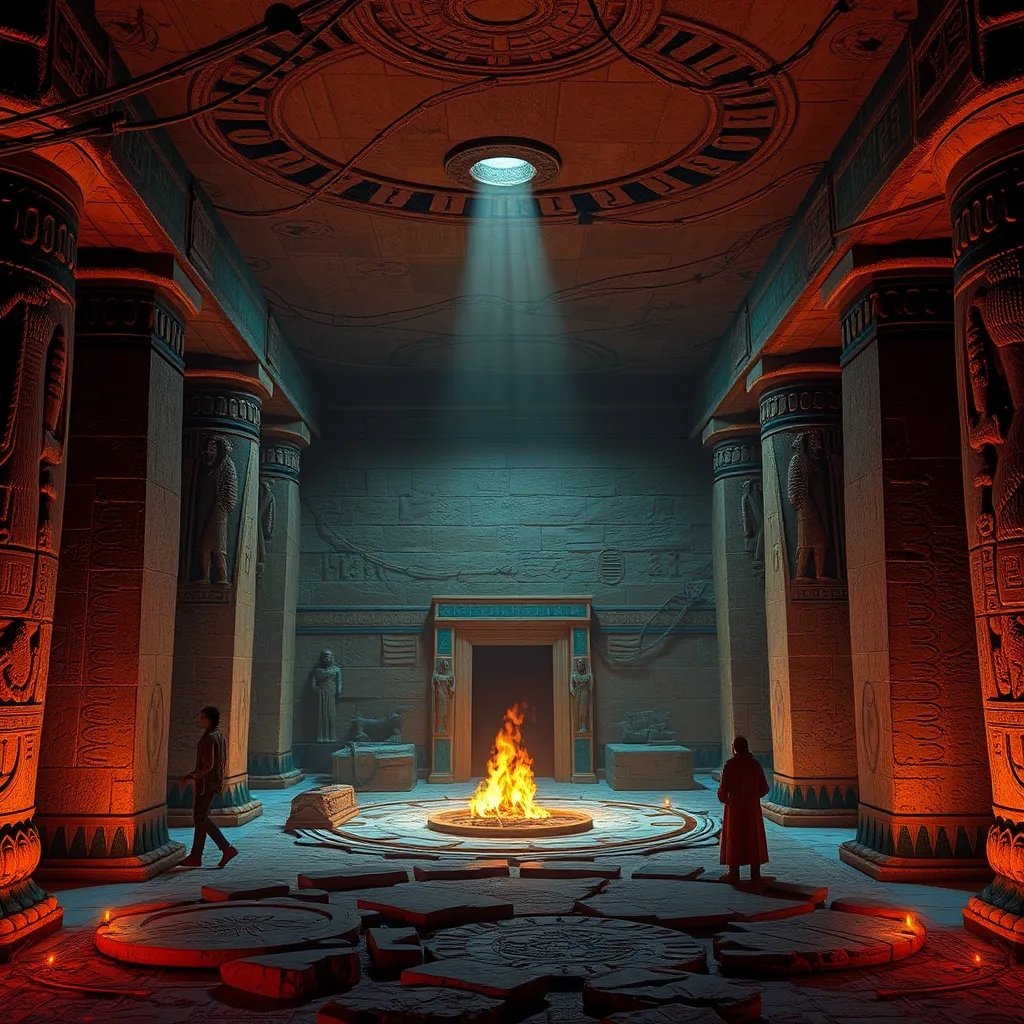The Duat: Exploring the Myths and Legends of the Egyptian Underworld
I. Introduction to the Duat
The Duat, often referred to as the Egyptian underworld, is a significant concept in ancient Egyptian belief systems. It represents the realm of the dead, a place that embodies both fear and hope, where souls undergo judgment and transition after death. The Duat is not merely a shadowy abyss; it is a complex world filled with challenges, deities, and landscapes, all integral to the beliefs surrounding the afterlife.
In the ancient Egyptian worldview, the Duat plays a crucial role in the journey of the soul. It is here that the deceased face trials and tribulations before reaching eternal peace or suffering. The myths surrounding the Duat reflect the Egyptians’ perspectives on life, death, and the afterlife, emphasizing the importance of moral conduct and the quest for immortality.
II. The Structure of the Duat
The Duat is often described as a vast and intricate realm composed of various landscapes and regions, each with its own significance. Some of the notable features include:
- The Field of Reeds: A paradise where the souls of the righteous dwell, mirroring the Nile’s lush banks.
- The Lake of Fire: A perilous area where souls face torment, reserved for those deemed unworthy.
- The Hall of Judgment: The location where the soul’s heart is weighed against the feather of Ma’at, symbolizing truth and justice.
Each of these regions plays a vital role in the broader narrative of the Duat, illustrating the duality of reward and punishment that characterizes ancient Egyptian beliefs about the afterlife.
III. Deities of the Duat
The Duat is inhabited by numerous deities, each playing a specific role in the journey of the deceased. Among the key figures are:
1. Osiris: The ruler of the Duat
Osiris is perhaps the most significant deity associated with the Duat. As the god of the afterlife, he presides over the dead and governs the judgment process. His resurrection myth embodies the cycle of death and rebirth, making him a symbol of hope for the deceased.
2. Anubis: The god of mummification and the afterlife
Anubis, often depicted as a jackal or a man with a jackal’s head, is the guardian of the dead. He oversees the mummification process and guides souls through the Duat, ensuring they are prepared for the judgment that awaits them.
Other notable deities include:
- Thoth: The god of wisdom and writing, who records the results of the judgment.
- Ma’at: The goddess of truth and order, whose feather is used to weigh the heart of the deceased.
- Set: Often associated with chaos, he plays a complex role in the myths of the Duat, sometimes seen as an antagonist.
IV. The Journey Through the Duat
The journey through the Duat is a central theme in ancient Egyptian funerary beliefs. It begins immediately after death, where the soul embarks on a perilous journey to reach the afterlife.
The process typically involves:
- Death and Mummification: The body must be preserved to house the soul for eternity.
- Journey through the Duat: The soul faces numerous challenges, including encounters with demons and dangerous landscapes.
- The Hall of Judgment: Here, the heart of the deceased is weighed against Ma’at’s feather. A heart lighter than the feather signifies a righteous life, allowing the soul to enter the Field of Reeds.
During this journey, spells and funerary texts, such as the Book of the Dead, play a crucial role. They provide guidance, protection, and assurances to the deceased, ensuring a safe passage through the Duat.
V. Symbolism and Imagery in Duat Myths
The myths surrounding the Duat are rich with symbolism and imagery, reflecting the beliefs and values of ancient Egyptian culture. Common symbols include:
- The Ankh: A symbol of life and immortality.
- The Scarab: Representing transformation and rebirth.
- The Eye of Horus: Symbolizing protection and royal power.
Artistic representations of the Duat often exemplify these symbols through intricate tomb paintings and carvings, depicting the journey of the soul and the various deities encountered along the way.
VI. Cultural Impact and Legacy
The myths of the Duat have significantly influenced Egyptian culture and society. They shaped funerary practices, art, and literature, reinforcing the importance of morality and the afterlife. The belief in the Duat encouraged the construction of elaborate tombs and the practice of mummification, aimed at ensuring a successful transition to the afterlife.
In modern times, the Duat has continued to inspire interpretations and representations in various forms of literature and media, from novels to films, reflecting contemporary fascination with ancient beliefs about death and the afterlife.
VII. Comparative Mythology
When exploring the Duat, it is intriguing to compare it with other mythological underworlds, such as:
- Greek Hades: A realm where souls reside post-death, with a focus on judgment and reward.
- Norse Hel: The abode of those who did not die a heroic or honorable death.
These comparisons highlight the universal human concerns surrounding death, morality, and the afterlife, revealing deep-seated beliefs that transcend cultural boundaries.
VIII. Conclusion
In summary, the Duat holds a place of great importance in ancient Egyptian thought, symbolizing the complexities of death and the afterlife. Its myths and legends not only reflect the values of the society but also resonate with contemporary beliefs about life, death, and what lies beyond. As we continue to explore and interpret the rich tapestry of the Duat, we gain a deeper understanding of human existence and the enduring quest for meaning in the face of mortality.





